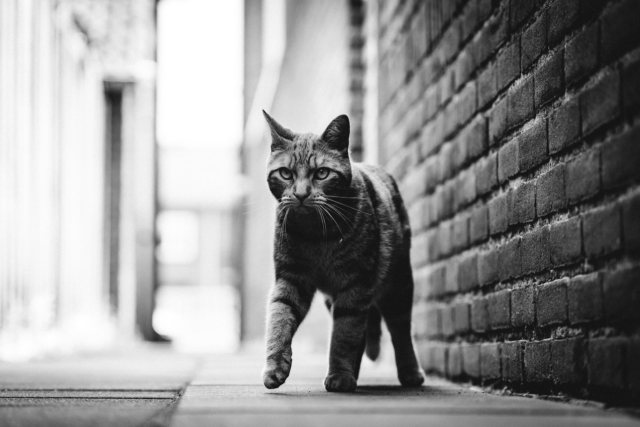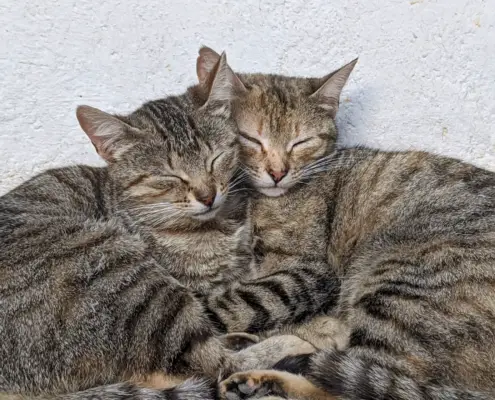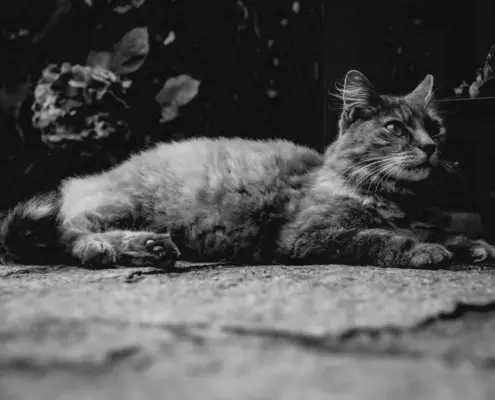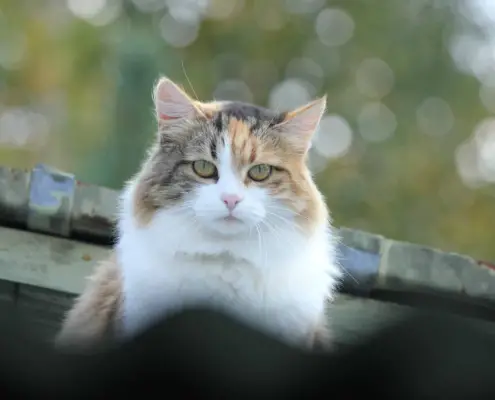
Cats have long fascinated humans with their grace, agility, and unmatched hunting skills. But where did these remarkable abilities come from? To truly understand cats, we must delve into their evolutionary history. The evolution of cats is a captivating tale that spans millions of years and involves fascinating adaptations. From their ancient ancestors to the domesticated felines we know today, the story of cat evolution is one of resilience, survival, and remarkable physical prowess.
The Ancestors of Modern Cats
To understand the evolution of cats, we must first look back to their ancient ancestors. The roots of the cat family tree can be traced back to the Eocene epoch, around 50 million years ago. It was during this time that the first cat-like mammals, known as Proailurus, emerged. These early feline relatives were small, tree-dwelling creatures that possessed some of the key characteristics we associate with modern cats, such as retractable claws and sharp teeth.
As time went on, these early feline ancestors underwent significant evolutionary changes. The emergence of larger prey animals led to the development of more robust bodies and powerful jaws. This allowed cats to become skilled predators, capable of taking down larger prey. The evolution of cats was driven by the need to adapt to changing environments and secure their place in the animal kingdom.
Evolutionary Adaptations of Cats
One of the most remarkable evolutionary adaptations of cats is their incredible agility and flexibility. Cats possess a highly flexible spine, which allows them to twist and turn their bodies with incredible precision. This flexibility, combined with their powerful leg muscles, enables cats to navigate through complex environments with ease. Whether it’s leaping onto a high ledge or pouncing on unsuspecting prey, cats’ agility is a testament to their evolutionary success.
Another key adaptation of cats is their retractable claws. Unlike most other mammals, cats have the ability to retract their claws when they’re not needed. This allows them to keep their claws sharp and ready for action, while also preventing them from wearing down when walking or running. The retractable claws of cats are a result of millions of years of evolution, giving them a distinct advantage when it comes to hunting and climbing.
The Domestication of Cats
While cats have a long history of living alongside humans, the process of domestication is a relatively recent development. The domestication of cats is believed to have begun around 4,000 years ago in ancient Egypt. Unlike other animals that were domesticated for their usefulness in agriculture, cats were initially valued for their ability to control pests, particularly rodents.
Over time, cats became more than just pest controllers. They forged a unique bond with humans, earning a place in our homes and our hearts. The domestication of cats led to the development of various breeds, each with its own distinct characteristics and traits. From the sleek and athletic Siamese to the fluffy and affectionate Maine Coon, domestic cats showcase the diversity and adaptability of their evolutionary heritage.
The Role of Hunting in Cat Evolution
Hunting has played a crucial role in shaping the evolution of cats. From their earliest ancestors to modern domestic cats, hunting has been an essential aspect of their survival. The ability to hunt efficiently and effectively has allowed cats to thrive in various environments and secure their place as apex predators.
Cats possess a range of adaptations that make them formidable hunters. Their keen senses, including exceptional vision and acute hearing, enable them to detect prey from a distance. Cats also have a highly developed sense of balance, which allows them to stalk and pounce on their prey with precision. The evolution of cats’ hunting skills is a testament to their adaptability and resourcefulness.
The Unique Characteristics of Cat Anatomy
Cats possess a range of unique anatomical features that contribute to their remarkable abilities. One such feature is their exceptional night vision. Cats have a layer of tissue behind their retinas called the tapetum lucidum, which reflects light and enhances their ability to see in low-light conditions. This adaptation gives cats a distinct advantage when hunting during the night.
Additionally, cats have specialized whiskers, known as vibrissae, that play a crucial role in their hunting and navigation. These long, sensitive whiskers help cats detect changes in air currents, allowing them to navigate through narrow spaces and detect the presence of prey. The evolution of these unique anatomical features has given cats a significant advantage in their hunting pursuits.
Cat Communication and Social Behavior
While cats are often associated with independence, they also possess complex social behaviors and communication methods. The evolution of cats’ social behavior can be seen in their interactions with other cats, as well as with humans. Cats use a combination of vocalizations, body language, and scent marking to communicate their intentions and establish social hierarchies.
For example, cats communicate through a range of vocalizations, including purring, hissing, and meowing. Each vocalization serves a specific purpose, whether it’s expressing contentment, warning of danger, or seeking attention. Cats also use body language, such as ear position, tail movement, and facial expressions, to convey their emotions and intentions. Understanding these communication methods is essential for building strong bonds with our feline companions.
The Influence of Cat Evolution on Domestic Breeds
The evolutionary history of cats has had a profound impact on the development of domestic breeds. Each breed possesses a unique set of traits and characteristics that can be traced back to their ancestral roots. For example, the sleek and muscular bodies of breeds like the Bengal and the Abyssinian reflect their wild ancestors’ adaptations for speed and agility.
Furthermore, the evolution of cats has led to the development of breeds with different coat patterns and colors. These variations in coat characteristics are a result of genetic mutations that have been preserved and selectively bred over time. The diversity of domestic cat breeds is a testament to the enduring legacy of cat evolution and the remarkable adaptability of these fascinating animals.
The Future of Cat Evolution
As humans continue to shape the world around us, it’s inevitable that the evolution of cats will continue. While the domestication of cats has provided them with a stable environment and ample resources, it has also brought new challenges. Changes in human behavior, habitat loss, and climate change all have the potential to influence the future of cat evolution.
It is our responsibility as stewards of the natural world to ensure the continued survival and well-being of these remarkable creatures. By understanding their evolutionary history and adapting our actions accordingly, we can help preserve the unique qualities that make cats such extraordinary animals.
The Enduring Legacy of Cats’ Evolutionary Success
In conclusion, the evolution of cats is a testament to the remarkable adaptability and resilience of these extraordinary creatures. From their ancient ancestors to the domesticated felines we know today, cats have undergone significant evolutionary changes to become masters of stealth, agility, and hunting prowess.
Understanding the evolutionary history of cats allows us to appreciate the unique qualities that make them such cherished companions. From their retractable claws and flexible spines to their exceptional night vision and communication methods, every aspect of a cat’s anatomy and behavior is a result of millions of years of evolution.
As we continue to marvel at the wonders of cats, let us also recognize our responsibility to protect and preserve their evolutionary legacy. By understanding and respecting the natural instincts and needs of cats, we can ensure their continued well-being and celebrate the enduring bond between humans and these remarkable creatures.
If you enjoyed my article, I would appreciate you sharing it with your network.

Sima Ndlebe
Sima writes for CatBuzz. He is interested in Cats, Health and Fitness, and Entrepreneurship.
Published: 1 November 2023



